Divine design: The holiness of place
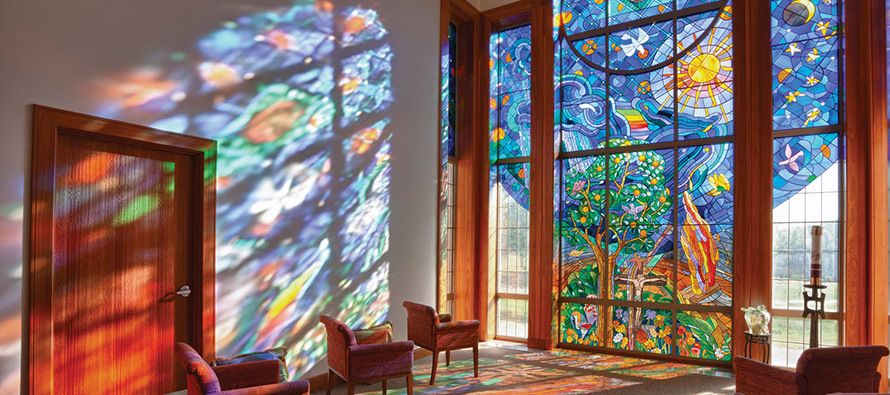
The Canticle Prayer Room at Chiara Center of the Hospital Sisters of St. Francis in Springfield, Illinois.
Among the most personal questions to ask someone is surely: How do you pray? What’s your formula for a successful encounter with the Holy Unseen? Possible answers to this question number about 7 billion, depending on the current count of the living.
While prayer is a kind of communication, it’s rarely about the words. Prayer is, most vitally, a mode of relationship. Of course it involves God, but just as essentially, it includes human actors. Prayer is communal as much as solitary. What we do in the hour of prayer, we do together: across the planet, across centuries, across countless walls and circumstances that vie to keep us apart.
Where do we pray? Everywhere we can! Since prayer is rooted in intention, our decision to pray is the doorway to sacred space. Cathedral or parlor, forest or back stoop, we arrive in the presence of the Eternal just the same. Vast caverns of consecrated space may enhance the experience, literally drawing our eyes and hearts heavenward. Yet intimate interiors invite the inward journey, where the indwelling Spirit waits. Wherever this activity takes us, the results are not about getting it right, not at all about having a mystical experience that’s one for the hagiographies. Quite simply, in this space, we find our place. When we pray, we are surrounded and held, yet liberated and boundless. Here, we know who God is, and who we are.
The places we choose to pray are hardly random. An element of invitation is characteristic of sacred space. A bench that calls our name. An open door. A beckoning tree. A window opening wide on natural wonder. A holy image that takes us by the hand, or perhaps the heart, with its benevolent gaze. We feel the spiritual saturation of a place that’s frequently prayed in. Sometimes you can see the worn stones where many knees have knelt. More often it’s just a quality of the air: buoyant, yet reverent. Sacred places aren’t just pretty interiors, or grand vistas—although beauty can be enough to launch us into the attitude of praise.
Sacred space is expectant. It is hospitable space that feels prepared for our arrival. It ignites the fire in our prayer, drawing the faithful and the curious alike. The play of light may exalt our prayer, or we may find consolation in the sheltering darkness. Our prayer may be vocalized, or we may plummet into mothering silence. Whatever our prayer becomes, it is never an end, but only a beginning.
—Alice Camille
Find more prayer spaces in our expanded article here.
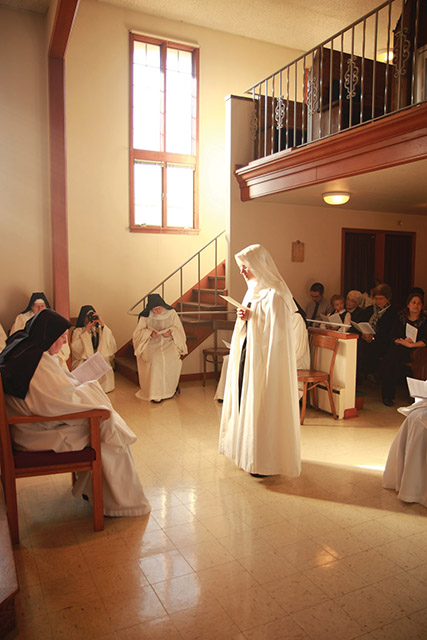
Cistercian Nuns, Valley of Our Lady Monastery
Prairie du Sac, Wisconsin
The nuns of Valley of Our Lady Monastery say, “Often in the earlier stages of prayer, there is a subtle seeking of oneself in the Other, as if God were a useful good, a mere means to the goal of self-fulfillment. Often the soul is not conscious of this aspect of her prayer, and so God gradually reveals it to her and purifies her love so that God and his love become the end rather than a means.
“This process of purification is painful, and can at times seem insuperable. At such times it is good to recall that we never pray alone. Scripture tells us that we do not know how to pray as we ought, and so the Spirit prays within us. Also, even when one is praying in a chapel by oneself, one’s individual prayer is inserted into the common prayer of the whole church—past, present, and future: the saints who have gone before us, and our brothers and sisters who are living out their faith alongside us. This is a consolation; when our own prayer seems poor and weak, we know that, united with all the other members of the church, it is strong and shares in the graces of the whole Body, whose Head is Christ.
“Entering into a chapel, one is reminded of this universal and mystical dimension of prayer, for one enters into a sacred space, a space dedicated solely to the Lord, a place that has already been prayed in, sanctified, and blessed.”
Sisters of Charity of Seton Hill
Greensburg, Pennsylvania
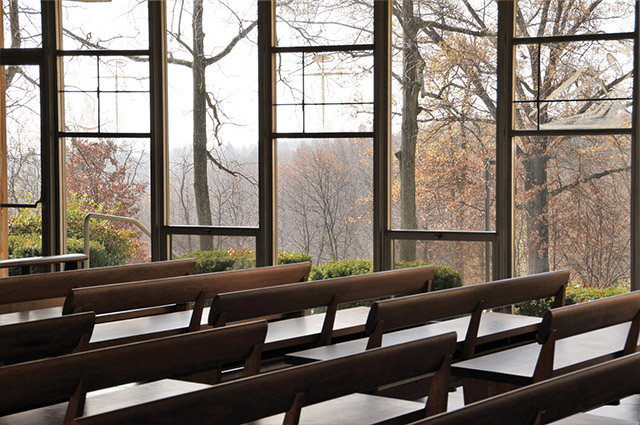
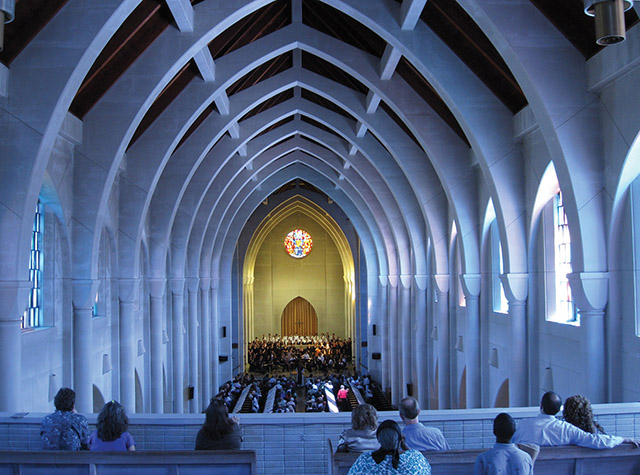
Trappists of the Monastery of the Holy Spirit
Conyers, Georgia
The Monastery of the Holy Spirit is a community of more than 40 monks spanning several generations, who live, work, and pray together. They “dedicate themselves to the worship of God in a hidden life within the monastery under the Rule of St. Benedict. They lead a monastic way of life in solitude and silence, in assiduous prayer and joyful penitence.”
The monks say, “In an increasingly turbulent world, we offer a renewing place of peace and prayer.”
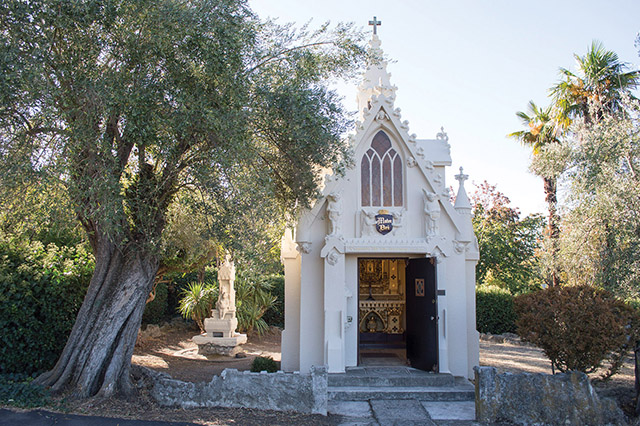
Dominican Sisters of Mission San Jose
Fremont, California
The Dominican Sisters of Mission San Jose invite all to join them in their chapel on the third Friday of each month for Taizé prayer: “meditative, simple songs that typically feature a line or two from the Psalms, creating a contemplative experience in music. In a spirit of peace and reconciliation, our Taizé service is attended by people of all ages.”
Poor Handmaids of Jesus Christ
Donaldson, Indiana
When we trust that the Spirit of God is authentically part of our personal, communal, and global lives, we are “in prayer.” Though this can be part of our lives “on the run” (for the Spirit is everywhere and in all situations), our body, mind, and soul seem to long for stillness as the meeting place.
—Sister Linda Volk, P.H.J.C.
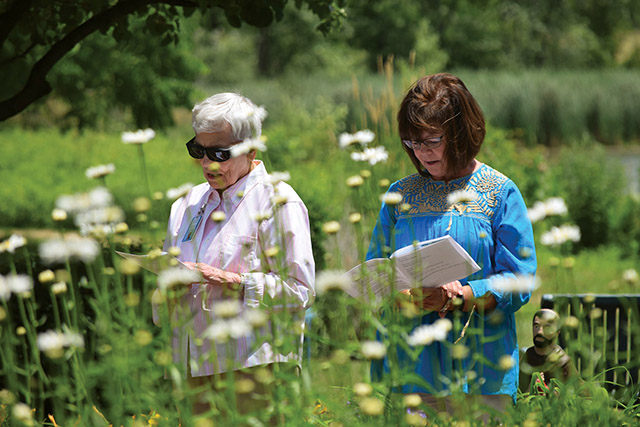
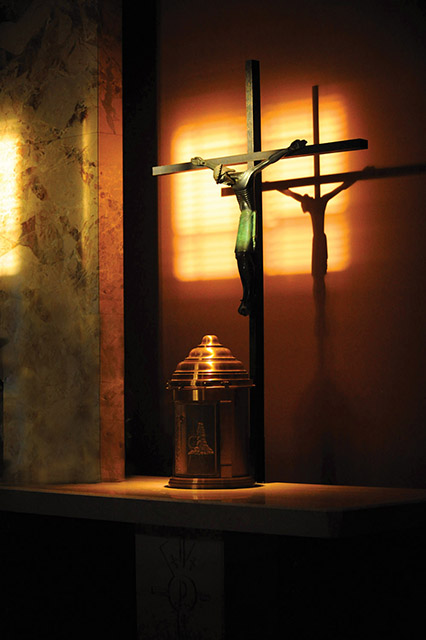
Order of Canons Regular of Prémontré (Norbertines), St. Norbert Abbey
De Pere, Wisconsin
My favorite place for prayer at St. Norbert Abbey is before the Blessed Sacrament within the abbey church. Behind our tabernacle is a compelling bronze crucifix—an image of the total self-gift of Christ on the Cross. The Bread of Life resting quietly in the tabernacle is a constant reminder of the eternal nourishment that our Lord and Savior offers to all of us in our “joys and hopes, griefs and anxieties.” In addition to the choir stalls, in which I sing shoulder to shoulder with my confreres, this is my place of refuge.
—Father Michael Brennan, O.Praem.
Benedictine Sisters, St. Mary Monastery
Rock Island, Illinois
Throughout my life, I’ve found God in nature. Before I entered the Rock Island Benedictine community, I often sought prayerful solace alongside the Cedar River where I lived in Iowa. I’d take my camping chair to sit there, watching the river flow as wildlife swam and scampered past. It helped me focus and find inner peace. I felt one with God.
I experienced the same thing when I first visited what would become my new home at St. Mary Monastery. I was invited into the chapel for Vespers on a beautiful summer evening. Nature was in full bloom all around! Three of the chapel walls are floor-to-ceiling windows, looking out on woods and lake. The sisters designed the chapel that way to experience God’s creation during prayers.
I’ve been a Benedictine Sister for 10 years now, and have never tired of the beauty of this prayerful space. Once, an eagle flew past the windows just beyond the altar. Often, deer can be seen through the trees, and geese and ducks paddle around the pond. Fireflies light up the grasses in the summer. The sunsets are breathtaking any time of year.
This chapel is where my heart is, always. It reminds me of God’s love and presence, and calls me to be God’s love and presence for others.
—Sister Stefanie MacDonald, O.S.B.
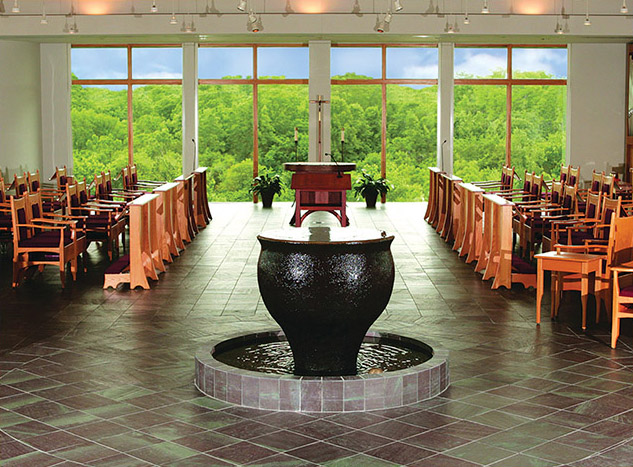
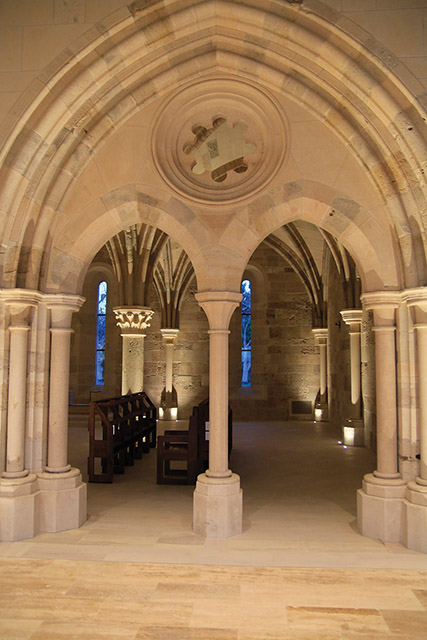
Cistercian Monks at the Abbey of Our Lady of New Clairvaux
Vina, California
A scholar of medieval Cistercian architecture remarked that the buildings of Cistercian monks and nuns cannot be divorced from the life that is led within the abbey walls. This means that the stark and simple beauty of Cistercian monastic architecture should inform our lives and spirituality as Cistercians. The buildings we monks inhabit express something about the nature of God. The restored 12th-century medieval space that stands on our abbey grounds today manages to stop one in one’s tracks and invites one to listen and be still.
This is our witness to Christ without words that invites souls to contemplate the nature and beauty of God and experience a deep sense of communion to God, nature, and to the rest of humanity.
—Father Guerric Llanes, O.C.S.O.
Sisters of the Presentation
Dubuque, Iowa
Simple, everyday items can become sacred symbols that turn ordinary places into sacred spaces. A spiral notebook can hold the world in prayer. Ours rests on a table in the gathering space outside the chapel at our motherhouse. Throughout the day sisters and guests enter this sacred space to pray for the needs of the world including the intentions listed in the notebook.

For Presentation Sisters, the lantern is a sacred symbol of going out to meet the needs of the world with presence and action. Our community foundress, Nano Nagle (1718-84), was born in Ireland, which suffered under oppressive British rule. Nano spent her days teaching children and her nights caring for the sick and elderly. The lantern was a sign of hope for those who saw it coming down the narrow alley toward their home.
Today, Presentation Sisters and associates continue to bring a lantern of hope to those who suffer. Grounded by prayer in our sacred spaces, we are sent to bring the Light of Christ and Love of God to those most in need.
—Sister Jessi Beck, P.B.V.M.
Sisters of Bon Secours
Marriottsville, Maryland
“Each of us spends time in personal prayer to deepen and sustain our relationship with God. As women of God committed to provide justice in radical solidarity with the poor and suffering, we join in prayer with those we serve. As contemplatives in action, our service can become a prayer offering too.”
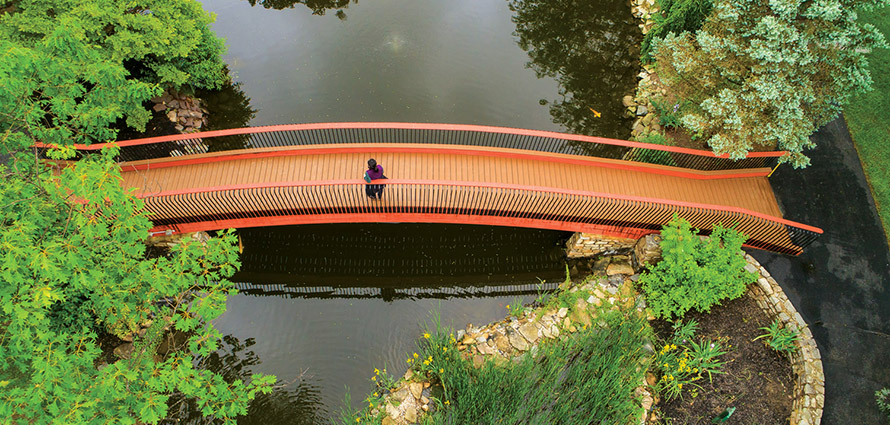
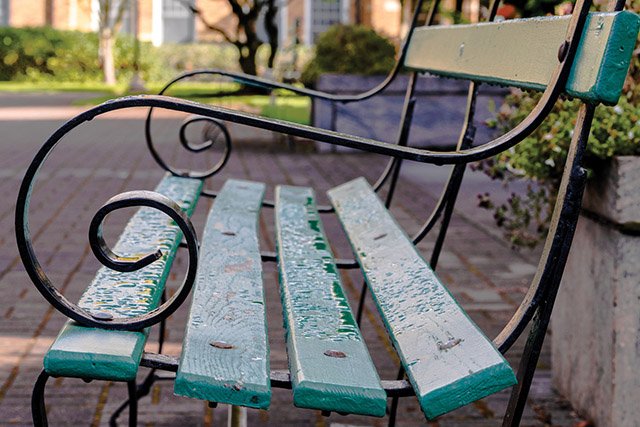
Benedictines of Mount Angel Abbey
Saint Benedict, Oregon
"In the ancient Benedictine tradition, we welcome you as Christ. Whatever your interests may be, we hope your visit to our Abbey will be a source of peace and blessing. We invite you to stay a while—to rest in silence, to read, to walk, and to practice the kind of reflection that comes from the deepest places in the heart.”
Maryknoll Sisters
Harare, Zimbabwe
As a child growing up in Pittsburgh, my father used to take me fishing on the lakes and rivers in Pennsylvania. No talking was allowed. It would scare away the fish, he said. As I sat quietly in the boat, I drank in the beauty of my surroundings and marveled at the wonder of creation. I believe this was my first experience of contemplative prayer.

When I joined the Maryknoll Sisters in the early ’60s, we said the Divine Office in common several times a day. The rhythm of the psalms and the beauty of Gregorian chant entranced me.
My assignment to East Africa in the ’70s was a dream come true. When I arrived on the shores of Lake Victoria to learn Swahili, I felt as if I had arrived home. The gentleness of the people and their joy in simple pleasures struck a chord within me. I fell in love with the extravagant abundance of nature that is displayed on the wide-open plains of the African savannah where elephants, giraffe, zebra, impala, and wildebeest graze side by side.
The people with whom I have worked in Africa view everything as gifts from God and pray accordingly. Prayers are offered for rain, for a good harvest, for the birth of a child, for the death of a family member, or any important event. These services are held under trees or on hillsides and remind me of how Jesus went off to pray in the desert and in the hills around Galilee. As I join in these prayers with my neighbors, I feel a sense of belonging with the people and with their awareness of God’s presence in their daily lives.
—Sister Janice McLaughlin, M.M.
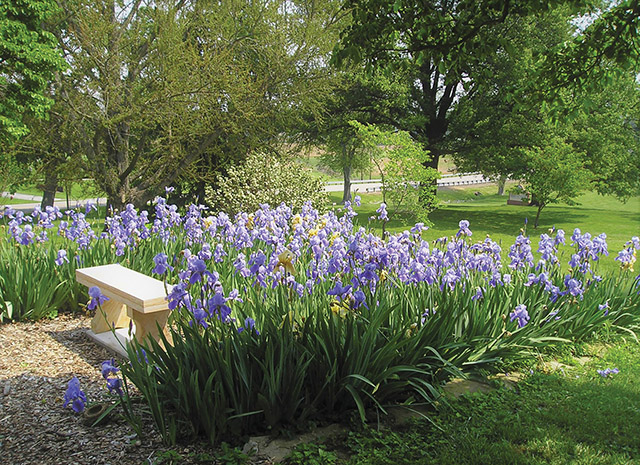
Ursuline Sisters of Mount Saint Joseph
Maple Mount, Kentucky
Prayer has silently taken me down numerous paths that have led me to God. They exist in spaces of quiet, such as a wooded area, a gentle touch, a nearby stream of water, a long reflective walk, the outstretched hands of the poor, or simply sharing with another the wonderment of our God. These ways of praying, as well as other forms and styles of prayer, have embraced my personality over the years and allowed me to touch the essence of God.
—Sister Betsy Moyer, O.S.U.
Tags
- poor handmaids of jesus christ
- sisters of charity of seton hill
- benedictine sisters
- norbertines
- sisters of bon secours
- trappists
- maryknoll sisters
- dominican sisters of mission san jose
- cistercian monks
- ursuline sisters
- prayer spaces
- cistercian nuns
- sisters of the presentation
- benedictines of mount angel abbey
Related
- Literature makes good people better
- Icons: An age-old entrée into the divine
- Religious communities have deep and diverse roots
- Scientific wonder is God’s handiwork
- Respite and renewal brought to you by religious communities
- Lives that lead to God: Biographies and memoirs
- Religious orders aid and advocate for migrants
- Rural religious take to the highways and byways
- More prayer spaces of religious communities
- Word as witness to the Word Read More
Most Viewed
- Find your spirituality type quiz
- Questions and answers about religious vocations
- Celibacy quiz: Could I be a nun? Could I be a brother? Could I be a priest?
- Resources for older discerners or those with physical and developmental differences
- About Vocation Network and VISION Guide

